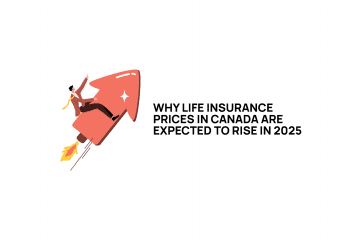In the confusing world of life insurance, whole life dividends are at the top of the ‘what the heck is that all about? Life insurance dividends are a concept relatively unique to the insurance world. Of particular importance is that these dividends are not the same as stock dividends.
Whole life insurance dividends are more correctly called return of premiums. They are just that – your own premium dollars being returned to you by the life insurance company, and they are taxed as such. In other words, these dividends aren’t taxed in any preferred fashion, they’re simply your own money being paid back to you, albeit with a more spectacular name. What sounds more exciting, ‘here’s a partial refund of what we overcharged you last year’, or ‘participating policy dividends’?
How Dividends are Determined
The single biggest thing you need to know about life insurance policy dividends is that they are not guaranteed. Worse, they’re determined by the executives of the company without recourse by the policyowners. Each year the insurance company reviews three aspects of their blocks of life insurance policies; mortality, interest and expenses. The performance of those three things start the determination of the dividends that will be paid, however the dividends can still be changed as the result of other factors – up to and including executives asking the question ‘how will paying your dividend affect my bonus this year?’.
However, putting aside the natural scepticism over non-guaranteed insurance policies, one of those factors has a disproportionate amount of effect on dividends. Mortality doesn’t normally change rapidly so that’s well calculated by the actuaries. Life insurance companies expenses don’t change drastically over short periods of time either as system and staffing costs are relatively stable. Interest rates however can have a dramatic impact on whole life insurance policy dividends. If interest rates fall, then interest on reserves decrease. That decrease increases the cost of risk, and an easy way to recoup that cost is to lower dividends.
It’s still a bit more complicated however. We’ve seen a steady decline in investment earnings over recent years so you’d expect that dividends would fall. And in fact, they have. Most, perhaps all life insurance companies in Canada in the last few years have cut their dividend payments to their whole life insurance policies.
However even if we best case have an increase in earnings, you can still expect your dividends to continue to fall. That’s due to the investment aspect of the reserves that drive these policies. Much of these reserves are in high interest (i.e. 7%-9%) safe, 10 year bond-type investments from years past. As these older bonds renew, they are doing so at much lower interest rates. Even if interest rates jump to 5%, those old 7% bonds are coming up and renewing at 5%. That is going to mean a continued lower than expected investment earnings, and that is normally reflected in dividends. Even if interest rates return to high returns, those newer 5% bonds must still wait 10 years before renewing at the higher interest rates. In short, expect your life insurance policy dividends to continue to decline.

Dividends and your policy
How do these dividends affect your policy? They can substantially affect your premiums and can frequently affect how long you have to pay premiums. In fact, there are 5 ways to use these dividends:
- Cash back. The insurance company simply cuts you a cheque each year.
- Paid up additions. The insurance company buys a tiny 1-premiums life insurance policy with the dividend. The amount of this coverage is added to your total life insurance policy amount.
- On deposit. The insurance company keeps the dividend and invests it for you.
- Term insurance. The dividends purchase a one year term insurance policy that increases your coverage for one year.
- Enhancement. This is a combination of 2 and 4 and is perhaps the most common option – and is the option that frequently results in your premiums being paid up in the future (hypothetically). With this option, your policy consists of a base whole life and a top up of term insurance (option 4). The dividend pays the term insurance price with hopefully some left over. That left over dividend now buys a paid up addition (option 2). The paid up addition coverage has no more premiums due ever, and that coverage replaces the corresponding amount of term insurance. Next year, the dividend has to pay a bit less of the life insurance premium (since some of it’s been replaced by the paid up coverage) and again buys a bit more paid up insurance. Eventually the term insurance is entirely replaced by these annual paid up additions. At that point the dividends are used to pay the annual base premium. That’s a complex way of saying that the company expects your policy to have no more premiums due after a period of years. But wait, there’s a fly in the ointment. If you expected your policy to be paid up in 25 years but the company cuts dividends (and again, almost all companies in Canada have been chopping dividends) then the dividends buy less paid up additions and your policy does not become paid up in 25 years. Maybe it never becomes paid up.
In fact in the late 90’s, many life insurance companies were successfully sued by consumers over ‘vanishing premium’ policies because the dividends failed to perform and consumers had to pay premiums beyond what they were told. So the concern isn’t hypothetical – it’s practical in nature.
Due to their non-guaranteed nature, we do not recommend whole life insurance policies with dividends. There’s too many things than can go wrong, at too far a point in the future to be easily corrected. It’s difficult to fix a policy at age 75 that you bought at age 50 if it goes wrong because your options at age 75 are limited.
If you have a life insurance policy with dividends and are concerned about the performance, you can ask the insurance company for an ‘inforce illustration using the current dividend scale’. However even with this you should still be pessimistic. As noted, even current dividend scales are quite likely to decline further so an inforce illustration is still likely to be overly optimistic.
If you have questions about your life insurance policy, feel welcome to contact us toll free at (866) 662-5433 and ask for Glenn.




